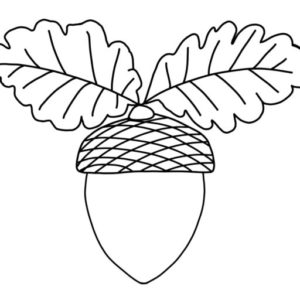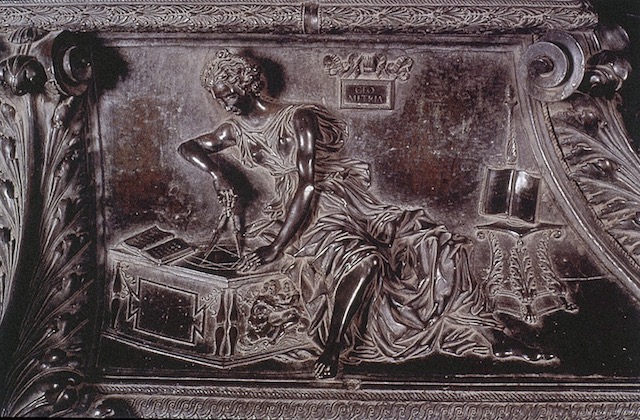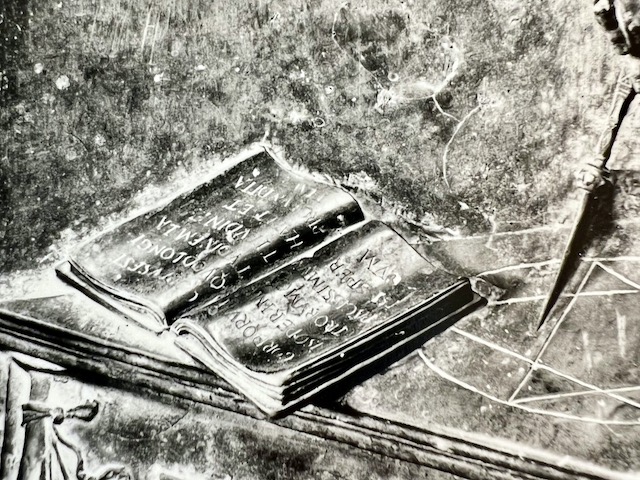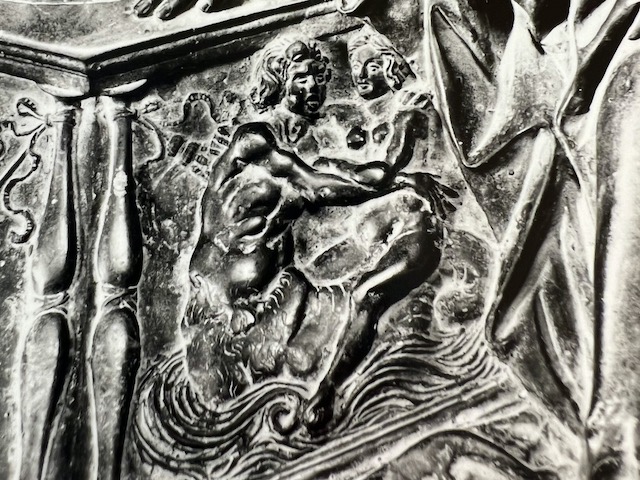Geometry
Geometria (figure 26), at the top right of the tomb, is positioned in a more active pose, entrenched in her work. Her posture corresponds with the other disciplines of Prospectiva and Music, all three of which are linked through mathematics. Geometry’s pose, like that of Prospectiva, is turned so that she faces the discipline of Music at the center. Fully draped in a long gown, her right hand holds a compass, inscribing two equilateral triangles in a circle. The mathematical problem visually represented, is echoed in the two inscribed books that surround her. The first text (Figure 27), which is open on the table, reads “Of all the bodies with equal circumference the most capacious is the sphere. A body is that which has length, width and depth.”[79] This inscription combines both a specific quote from Euclid’s Elementa. The book on the right pedestal (figure 28) reads “given an angle and given a circle to divide an equal angle containing a portion. To draw a contingent line from a given point to a given circle.”[80] These two sentences also come from Euclid to describe the action she is shown completing in the sculpture. On the bottom of her desk is a relief depicting figures, that appear to be wrestling with one having hairy, satyr-like legs (figure 29). The satyr embracing or potentially abducting the female figure likely invokes the theme of reason subduing passion.[81] On the other side, a blank tabula ansata or dovetail plaque is shown, a motif that was ubiquitous throughout ancient Rome, thus establishing another connection between Sixtus and the glory of Rome.
In Martianus Capella’s book, Geometry was said to have a geometer’s rod in her right hand and a solid globe in her left. On her left shoulder, a peplos was draped with magnitudes and the orbits of planets. Additionally, she noticeably was wearing a pair of walking shoes which were very worn down from her time traversing the globe.[82] While she lacks the walking shoes in the panel, her right foot is significantly foreshortened as if she were fully three dimensional and extending into the realm of the viewer from the flat background of the panel. Still, the writings of Capella do not to specifically apply to the figure of Geometry. Neither do those of Alain de Lille. Described as elegant and beautiful, wearing an ornamented dress, she carried a wand which encircled the globe, measured the space of the earth, enclosed the sea in fixed limits, and compassed the steeps of heaven.[83] The only connection that can be drawn to the Anticlaudian, is that to the compass in her hand. Otherwise, the figure of Geometry and her actions derive from the inscribed texts on either side of her. Again, Pollaiuolo and his advisor deviated from iconographical conventions, in this case synthesizing the classical texts and incorporating relative mathematical treatises that reemerged with the artistic developments of linear perspective.
Figure 26. Antonio Pollaiuolo, Tomb of Sixtus IV, Detail of Geometria, c.1484-1493
Figures 27, 28, and 29. Antonio Pollaiuolo, Tomb of Sixtus IV, Detail of Geometria Inscriptions and Satyr Figure, c.1484-1493




